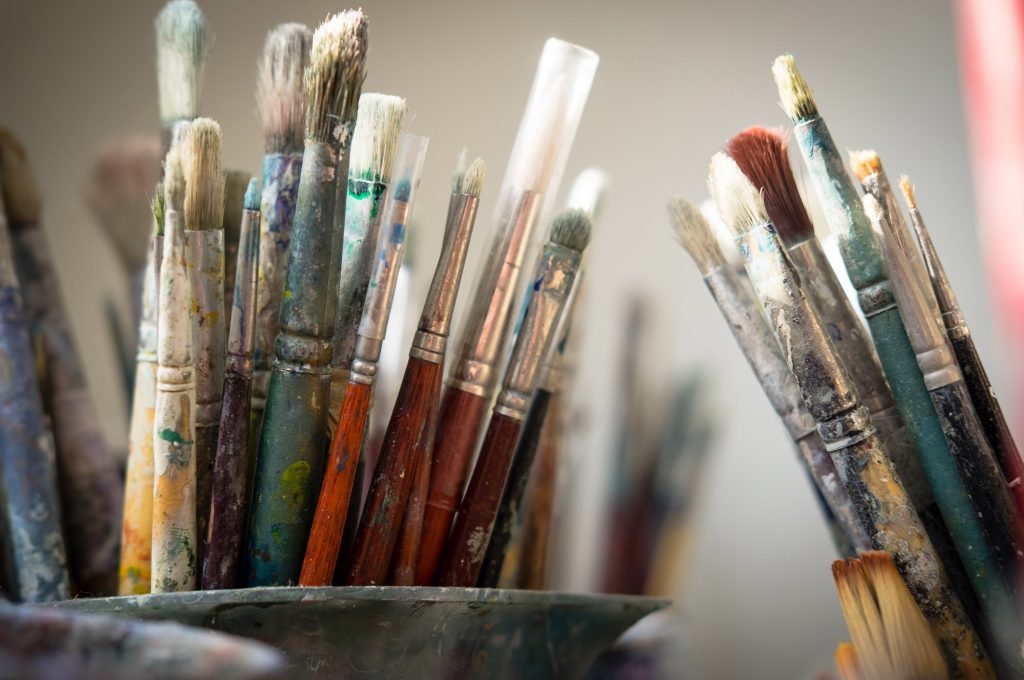
Teaching High School Art Lessons to Your Homeschool Student.
Your son or daughter needs one year of fine art credit in high school, and all you know is finger painting. How in the world can you possibly teach high school art lessons? Drawing on History is the perfect curriculum for you and your student! It’s easy to follow and practically self-guided for you and your student. This easy-to-understand art curriculum cracks open the world of art and includes hands-on art history lessons, which every student will love, even if they are not interested in art.
But Making Art Is Messy!
If teaching high school art lessons is the last thing you want to do with your kids, it might be time to rethink your schooling objectives. I know what you’re thinking – it’s messy, and I don’t have a clue about it! I get it. Most of my friends sent their kids to my house to do art because I didn’t mind the mess, knew what I was doing, and loved the creative process. But what I love the most is when I see the “light” go on inside their brain, and I can bet you do too. When that happens, you just have to forget about the mess. But to the point, are there benefits of making art in High School? Yes! Let’s take a look at why art in High School (and earlier) really matters.

Since art was dramatically decreased in public education in the late 1980s, we’ve seen a decrease in academic scores across the board in the United States. Studies now show that an art-rich education helps your student in most other academic areas, including SAT scores, and can cause them to be more engaged in areas they are not interested in. That means that if a student engages in art (visual, performance, music, etc.), you will see academic interest and scores increase.
My primary reason for writing Drawing on History was to engage high school students in art and the history that took place during the same time periods. Of course, it worked, even for homeschooled students who weren’t inclined to do art. Not only did it help with cross-parallel academics, but it increased their interest in other areas too.

The Benefits of Art are Academic Success
In 2013 the Arts Education Partnership conducted a study showing that an art-rich education:
1. Boosts literacy and English Language Arts
2. Advances math achievement
3. Engages students in school and motivates them to learn
4. Develops critical thinking
5. Improves school culture
But an art-rich education has many more benefits than just getting them to study history. It has been proven that the arts also help prepare students for workplace success. This is what their study had to say about that:
The Benefits of Art Lessons are Success in the Workplace
The arts prepare students for success in work.
Arts education develops thinking skills and capacities key to success in the 21st Century workforce.
Arts education:
1. Equips students to be creative. Arts education develops creativity, one of the top five skills employers prize for the 21st Century. Students receiving an arts-rich education perform better on creativity assessments than those receiving little or no arts education. Performing arts students, for example, show greater flexibility and adaptability in thinking than their peers.
2. Strengthens problem-solving ability. The arts develop reasoning skills that prepare students to solve problems. For example, students who study the arts score higher than their peers on tests measuring the ability to analyze information and solve complex problems and are more likely to approach problems with patience and persistence.

3. Builds collaboration and communication skills. In the arts, students learn to articulate their intentions, receive and offer constructive criticism, and listen actively to others’ ideas. Art-making allows students to experience what it feels like to be active community members and work as a team to determine and achieve common goals.
4. Increases capacity for leadership. Students who participate in the arts develop leadership skills, including decision-making, strategy-building, planning, and reflection. They also prepare to use these skills effectively by developing a strong sense of identity and confidence in their ability to positively affect the world around them.
And if that doesn’t convince you of the importance of an art-rich education, then look at the proven life skills it will give them, according to the Arts Education Partnership:
1. Strengthens perseverance
2. Facilitates cross-cultural understanding
3. Builds community and supports civic engagement
4. Fosters a creative community.
The Arts Engage Students
Wow! Why would you let the arts slide when it has so many remarkable benefits? If you homeschool and can’t bear to touch the arts, look into my book Drawing on History or find someone teaching art, music, or drama classes and engage your student in the arts. You will not be disappointed.

Sources:
This information was taken from Preparing Students for the Next America, by the Arts Education Partnership in Washington, DC, April 2013. To read the full article: Arts Education Partnership
Additional Reading:
The Arts Need to Be a Central Part of Schooling – Education Week, October 02, 2017
ARTS Education Partnership – Website
New Evidence of the Benefits of Arts Education – Brown Center Chalkboard, February 12, 2019

Would you like to share your thoughts?
Your email address will not be published. Required fields are marked *